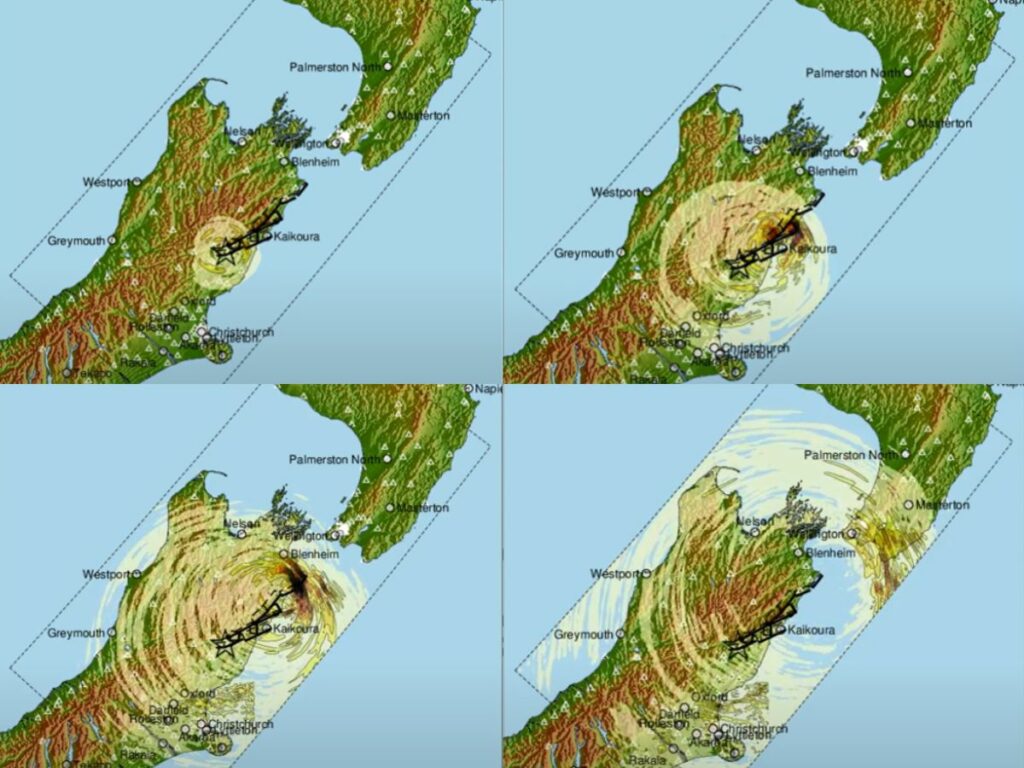When the ground moves beneath our feet there is a fun-park of physics at play: pressure, friction, energy, speed, distance, time – all interacting to produce a unique felt experience for each earthquake. With so many factors to ground shaking how do we ensure people will be safe? How do we make sensible land use plans? What engineering design standards are appropriate? Enter the field of ground motion prediction where there is change afoot…
Ground motion prediction has traditionally relied on past observations to estimate what will happen in future earthquakes. Principal Investigator of Te Hiranga Rū QuakeCoRE’s Ground Motion Simulation and Validation Programme, Brendon Bradley, recalls feeling like he was using a blunt instrument when he started studying site-specific ground motions from the 2010-2011 Canterbury Earthquake Sequence. That’s when he decided to bring physics-based ground motion simulations, showing promise overseas, to Aotearoa New Zealand.
Ground motion simulations use a 3D model of the earth’s crust with different soil and rock types and characteristics of known faults. Based on what is known about seismic waves and how they travel, such simulations can predict how the ground will move at a given site in any earthquake. With supercomputers and ever-more-detailed crustal models, the improvement over old empirical methods is that shaking can be estimated with confidence for conditions we haven’t experienced before.
QuakeCoRE researchers have been improving the prediction capabilities of ground motion simulations by testing results against thousands of real earthquakes. New Zealand contributed to this validation work in a unique way – by having a large, complicated earthquake at the outset of the research programme. The 2016 Kaikōura Earthquake, with a magnitude of 7.8, ruptured over 20 faults in 2 minutes and, at a big picture scale, ground motions simulated by QuakeCoRE were close to measured ground motions.
Always moving to improve seismic hazard knowledge, QuakeCoRE researchers have now simulated earthquakes from faults in New Zealand’s National Seismic Hazard Model. These simulations make up Cybershake, an initiative started in California to harness the predictive power of physics-based ground motion simulations for the benefit of seismic hazard analysis. Lessons from Cybershake NZ will be incorporated into the National Seismic Hazard Model as part of an update due in 2022.
There is more ground to cover, but Brendon can see a time when 3D simulations replace empirical methods entirely. QuakeCoRE is iteratively bringing New Zealand closer to having no surprises when a large earthquake strikes. We will know what ground shaking to expect and, with uptake by policy-makers, planners, and engineers, we will have prepared accordingly – thereby making New Zealand more resilient.

